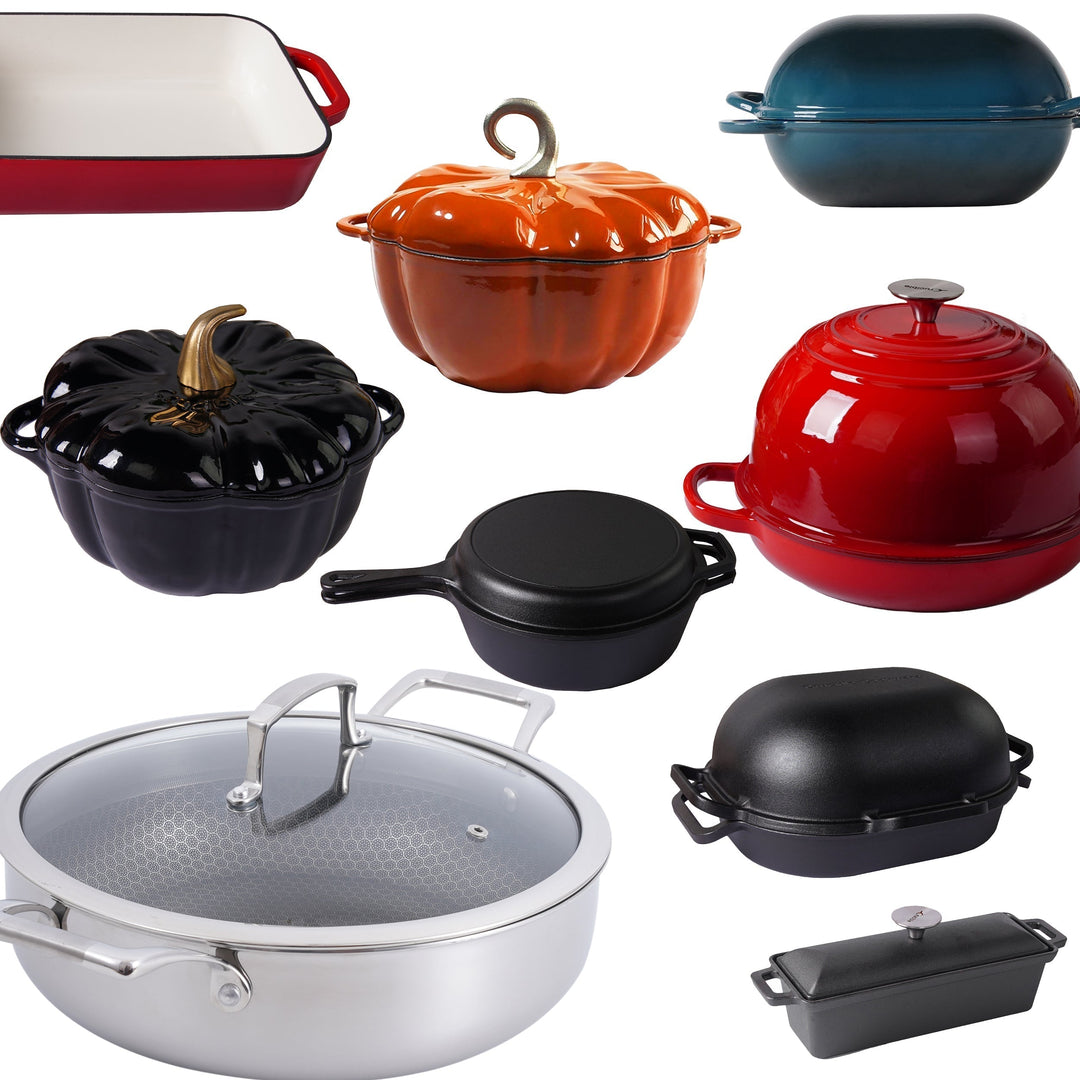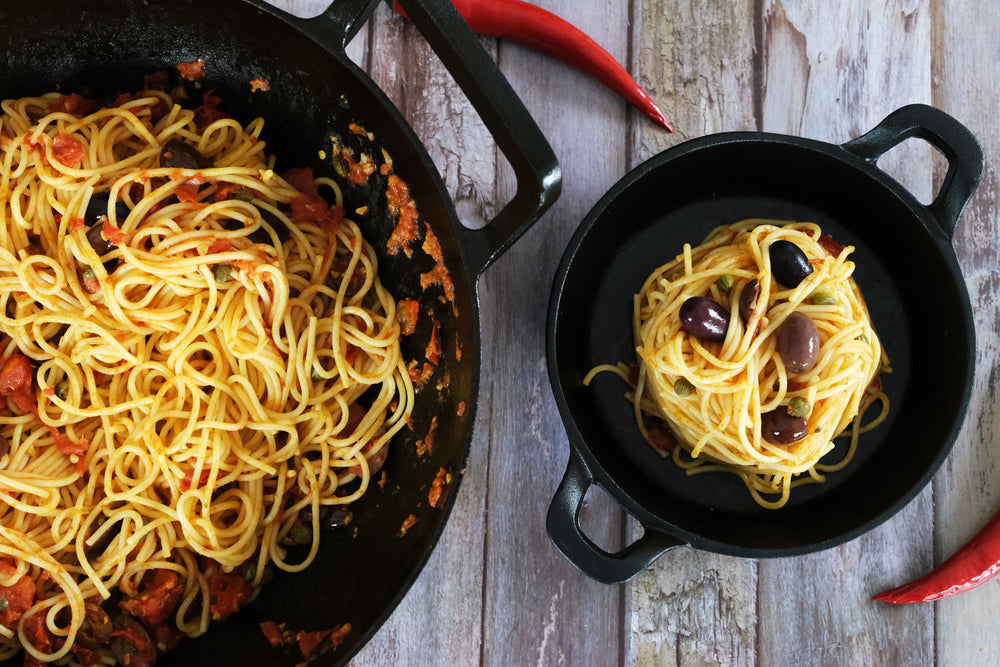Understanding the Scoville Heat Unit (SHU): Measuring Pepper Heat

When it comes to chili peppers, not all heat is created equal. Some peppers bring a mild warmth that enhances flavors, while others deliver a fiery punch capable of overwhelming the palate. To quantify this spectrum of spiciness, the Scoville Heat Unit (SHU) scale was developed—a standard that remains central to how we discuss and compare peppers today.
The Origins of the Scoville Scale
The Scoville scale was introduced in 1912 by American pharmacist Wilbur Scoville. His goal was to create a method for measuring the pungency of chili peppers. Scoville’s original test, known as the Scoville Organoleptic Test, involved diluting pepper extracts in sugar water and having a panel of tasters determine the point at which the heat was no longer detectable. The degree of dilution required provided the pepper’s rating in Scoville Heat Units.

From Subjective Testing to Scientific Precision
While groundbreaking for its time, Scoville’s method relied heavily on human perception, which is inherently subjective. Today, more precise laboratory techniques—such as High-Performance Liquid Chromatography (HPLC)—are used to measure the concentration of capsaicinoids, the active compounds responsible for heat. These results are then converted into Scoville Heat Units, maintaining continuity with the original scale.
How SHU Ratings Work
The SHU value indicates the number of times a pepper extract must be diluted before its heat becomes undetectable. For example:
-
Bell Pepper: 0 SHU (no heat)
-
Jalapeño: 2,500–8,000 SHU
-
Habanero: 100,000–350,000 SHU
-
Carolina Reaper: ~1,641,000 SHU on average, with some specimens reaching up to 2,200,000 SHU
This wide range demonstrates just how varied the chili world can be, from sweet and mild to dangerously hot.

Table of Famous Chili Peppers
| Pepper | SHU Range | Notes |
|---|---|---|
| Bell Pepper | 0 | Sweet, no heat |
| Poblano | 1,000–2,000 | Mild, often used in Mexican dishes |
| Anaheim | ~1,000–2,500 | Mild, versatile |
| Padrón (Pimiento de Herbón) | 500–2,500 (rarely up to 10,000) | Spanish tapas classic—mostly mild, ~10% surprise heat |
| Gochugaru (Korean Red Chili Flakes) | ~4,000–8,000 | Fruity, smoky, essential in kimchi and Korean cooking |
| Jalapeño | 2,500–8,000 | Popular for salsas and nachos |
| Guajillo | 2,500–5,000 | Mild–medium, important dried chili in Mexican cooking |
| Serrano | 10,000–23,000 | Hotter than jalapeños |
| Facing Heaven (Chao Tian Jiao) | 30,000–50,000 | Iconic in Sichuan cuisine, often dried |
| ISOT (Urfa Biber) | ~30,000–50,000 | Earthy, smoky Turkish chili |
| Cayenne | 30,000–50,000 | Common in powdered form |
| Piri Piri (African Bird's Eye) | 50,000–175,000 | Fiery, small, common in African & Portuguese cuisine |
| Thai Chili | 50,000–100,000 | Staple in Southeast Asian cuisine |
| Habanero | 100,000–350,000 | Fruity, floral, very hot; common in Mexican cuisine |
| Scotch Bonnet | 100,000–350,000 | Similar heat to habanero but sweeter, tropical; iconic in Caribbean cooking |
| Red Savina Habanero | ~200,000–855,000 | Once world’s hottest—hottest measured ~855,000 |
| Ghost Pepper (Bhut Jolokia) | ~800,000–1,040,000 | First to break 1 million SHU |
| Carolina Reaper | ~1,641,000 average, up to 2,200,000 | Guinness record holder before Pepper X |
| Pepper X | ~2.69 million | Current holder of world’s hottest chili title |
Does Color Affect Chili Heat?
While many chilies change color as they ripen (most often from green to red, but also to yellow, orange, or even purple), color itself is not a reliable indicator of spiciness. Heat comes from the concentration of capsaicinoids, not pigment. However, ripening can sometimes intensify both flavor and perceived heat. Green chilies often taste fresher and sharper, while red or fully ripened chilies may taste sweeter, fruitier, and occasionally hotter depending on the variety. Two peppers of the same color—for example, a red bell pepper (0 SHU) and a red Carolina Reaper (over 2,000,000 SHU)—can sit at completely opposite ends of the heat spectrum.

Are Bell Peppers Chili Peppers?
Yes — botanically speaking, bell peppers are chili peppers.
They belong to the same species as many hot chilies: Capsicum annuum.
What makes them different is that they contain no (or virtually no) capsaicin, so their Scoville rating is 0.
That’s why they are considered a type of chili pepper (in the broad botanical sense), even if we don’t normally call them “chili” in everyday cooking.
Green vs Red in the Same Chili (e.g., Padrón)
-
Capsaicin builds up over time. As chilies ripen from green to red, their capsaicin levels often increase, which can make the red, ripe chili slightly hotter than its green counterpart.
-
Flavor shifts too. Green chilies usually taste fresher, grassier, or more vegetal, while ripe red chilies often taste sweeter and more rounded. This can change how we perceive the heat, even if the absolute capsaicin difference isn’t huge.
-
Padrón example. Most Padrón peppers (green, harvested young) are mild — but about 1 in 10 can surprise you with a hot kick. If left to ripen to red, they can become noticeably hotter than the younger green ones, while also sweeter in flavor.
👉 So, within the same chili variety, the red, ripe version is usually hotter than the green, unripe one.
👉 Among chili varieties, you’ll find a huge range: from sweet bell peppers at 0 SHU all the way up to superhots like Carolina Reaper at 2,000,000+ SHU. So within the chili family itself, heat varies enormously.

Beyond Numbers: Perception of Heat
It’s worth noting that individual tolerance for capsaicin varies. A pepper that feels moderately hot to one person might seem unbearably spicy to another. Factors such as diet, genetics, and experience with spicy foods all influence perception.
Fresh vs. Dried Chili: Does Heat Change?
Capsaicin, the compound that gives chili its heat, does not break down during drying. This means that the Scoville rating for a chili variety remains the same whether fresh or dried. However, the experience of heat can differ:
-
Fresh chili: Contains water, so the heat often feels sharper, brighter, and more immediate.
-
Dried chili: With water removed, flavors (and perceived heat per gram) are more concentrated. The burn often feels deeper, smokier, and longer-lasting. Drying also develops more complex notes like earthiness, raisin-like sweetness, or smokiness.
This makes fresh chilies ideal for salsas and quick-cook dishes, while dried chilies shine in sauces, stews, and slow-cooked recipes where their richness develops fully.
Is the Scoville Scale Based on Fresh or Dried Chilies?
The modern SHU measurement is based on capsaicinoid concentration, measured with High-Performance Liquid Chromatography (HPLC). This can be tested on both fresh and dried samples. The result is normalized to reflect the inherent heat of the chili variety. Drying may make chilies seem hotter per bite because the water weight is gone, but the SHU number for the variety does not change.
Historically, Wilbur Scoville used fresh chili extracts in his original taste-panel method, but the principle was always about the concentration of capsaicinoids, not water content.
Are Chili Seeds the Source of Heat?
A common belief is that chili seeds are the hottest part of the pepper. In reality:
-
Seeds do not produce capsaicin. The real source of heat is the placenta—the white membrane that holds the seeds.
-
Seeds can feel hot because they are in direct contact with the placenta and get coated with capsaicin oils.
-
Removing seeds can make chilies seem milder, but that’s mostly because you are discarding parts of the placenta along with them.
When it comes to Scoville testing, extracts measure total capsaicinoid content in the chili, whether seeds are present or not. Since seeds themselves contain negligible capsaicin, they do not significantly affect SHU values.

Common Chili Myths: Fact or Fiction?
-
Myth: The seeds are the hottest part of a chili. Fact: Heat comes from the placenta, not seeds. Seeds only carry capsaicin by contact.
-
Myth: Dried chilies are chemically hotter than fresh ones. Fact: Capsaicin concentration remains the same; drying only concentrates flavor and perceived heat per gram.
-
Myth: Removing seeds removes all the heat. Fact: Removing seeds may reduce some heat, but most comes from the placenta and inner membranes.
-
Myth: All chili varieties with the same color have the same heat. Fact: Color indicates ripeness or variety, not SHU. Different varieties of red chilies can vary from mild to extremely hot.
Why SHU Matters
Understanding SHU values helps chefs, food manufacturers, and home cooks select the right pepper for a dish. Whether balancing subtle heat in a salsa or crafting a hot sauce that challenges even the bravest spice lovers, the Scoville Heat Unit provides a shared language for discussing chili intensity.

Final Thoughts
The Scoville Heat Unit scale may have humble beginnings in a subjective taste test, but it has evolved into a critical tool for understanding peppers’ fiery personalities. By bridging science and culinary practice, the SHU allows us to explore heat with both curiosity and caution.
















Deja un comentario